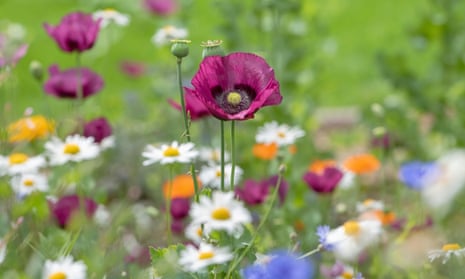Manicured privets and immaculate lawns are a thing of the past. Nowadays, it’s all about “ungardening”: eschewing toxic pesticides or sterile patio decking to create gardens that will encourage native wildlife to live and flourish. Rewilding, as it’s more commonly known, has been growing in popularity across Europe and the US, as green-fingered activists use their skills to reverse ecological decline and encourage the growth of native species. But how best to turn the average British garden into an idyll for birds, mammals and, yes, even bugs? Wildlife gardening expert Jenny Steel weighs in.
Reject pesticides – and get your wildlife working for you
“Gardening organically is incredibly important,” says Steel. “If you’re using pesticides and sprays, you’re basically removing a big food source, especially for birds, as they feed on small invertebrates.” If you are worried about slugs, a beer trap is a good alternative – simply pour some beer into a little container on the ground, and the slugs will go into it. But Steel prefers to get nature working for her. “Say you’ve got lots of aphids eating your roses: you can encourage blue tits to come and eat those aphids by hanging a bird feeder next to the roses. That way, your garden wildlife is working for you – because everything eats something else.”
Make a pond, if you can

“Birds need to drink and keep their feathers clean,” she explains, “so if you have room for a small wetland area, like a little pond, that’s a fantastic habitat. It’s somewhere not only birds and mammals will come to drink, but you’ll also get dragonflies, and frogs will spawn there.” If there isn’t room for a pond, or you have young children, a birdbath is a good idea.
Creepy-crawlies are your friends
Even if you don’t like them, insects are crucial to maintaining a healthy garden ecosystem. Steel thinks that bug hotels are a waste of time and money. “Find some space in your garden underneath a shrub or bush and pile up some moist twigs, bark or small logs. That’s a great place for beetles and other invertebrates to have their homes.”
Don’t just let your lawn grow wild
“I’ve read a lot recently about how brilliant it is to let your lawn grow and how it makes this fantastic wildlife habitat,” Steel says. “Unfortunately, it doesn’t.” Most suburban lawns planted post-1950 use rye grass, which is durable and hard-wearing, but not great for wildlife. If you want a mini-meadow in your garden, the best thing to do is leave part of the garden unmown and sow other types of grass and suitable wildflowers for the soil. “The idea of leaving a garden so it goes wild is a myth,” she says. “A garden needs to be managed, because if you don’t manage it, all you end up with is nettles – and you need a diversity of plants to attract different types of wildlife.” So, get in your garden, and start snipping those nettles and weeds.
Plant things for wildlife to eat
What you grow in your garden is critically important, Steel says. She advises planting wild marjoram: it’s great for insects, and you can eat it. “Everyone should also have a buddleia of some sort,” she says. “They’re great for butterflies, and also give lots of pollen and nectar for bees and moths.” It’s worth remembering, however, that some species of buddleia are highly invasive.
Educate yourself
The best way to create an eco-friendly garden is to educate yourself. “Get a good book on wildlife – there are lots now,” Steels says. (She has published several herself.) Don’t just assume something is good or bad.” And enjoy the process of learning. “The more you find out about the wildlife that uses your garden, the more fascinated you’ll become. Because it really is wonderful to walk out into your garden in the morning and see what’s there.”

Comments (…)
Sign in or create your Guardian account to join the discussion